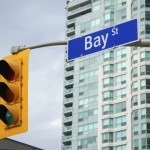- the planning rationale for seeking out Section 37 agreements in Toronto is unclear;
- there is little consistency in the use of Section 37 agreements, as they occur on a case-by-case basis, and ward councillors have considerable discretion in negotiating and allocating the benefits; and
- provincial legislation and planning policies regarding Section 37 lack clarity.
Given the significant questions this paper raises about the use of Section 37 in Toronto, the author suggests that there should be serious consideration of its abolition, reform or replacement with alternative tools.
Trading Density for Benefits: Section 37 Agreements in Toronto is the second in IMFG’s new Perspectives series – a shorter, accessible style of paper intended to help inform and spark public debate about important current issues in urban public affairs.
It accompanies the full-length IMFG Paper research report called Trading Density for Benefits: Toronto and Vancouver Compared, which can be found here.
Key facts and findings
- Between 2007 and 2011, the City of Toronto entered into 157 Section 37 agreements.
- It is estimated that these agreements with property developers secured $136 million in cash for the City, as well as in-kind benefits.
- Agreements were concentrated in the parts of the city that have experienced the most rapid growth and property development, with three downtown wards receiving 53 percent of the benefits.
- While there is little ward-by-ward consistency in the types of benefits, a large share was “desirable visual amenities” such as parks, roads and streetscapes, and public art.
For more information, please contact:
Dr. Aaron Moore
Fellow, Institute on Municipal Finance and Governance
a.moore@utoronto.ca | 647-460-4479

